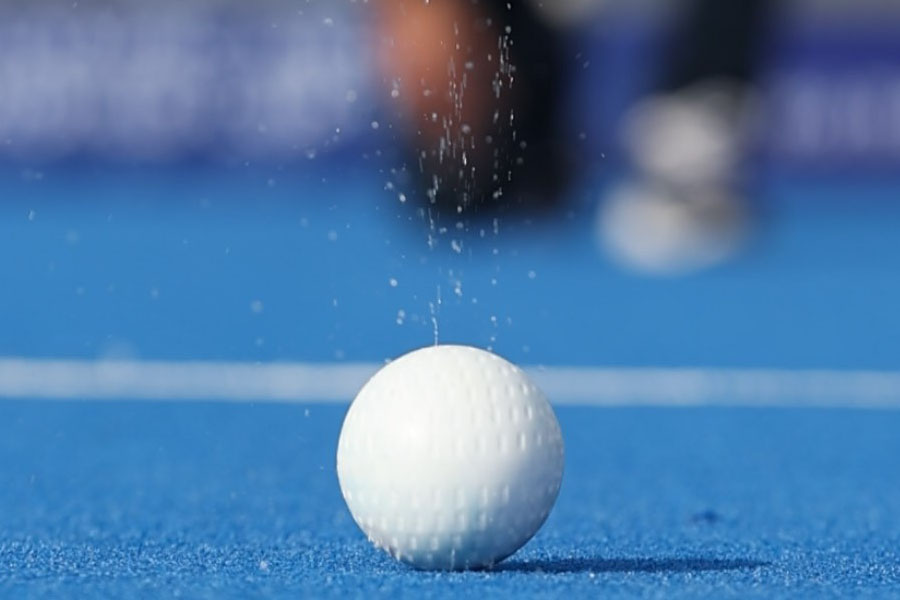Professional hockey fields require extensive wetting. Millions of litres of water are used annually to irrigate one field, making the sport expensive, unsustainable and inaccessible. That’s why the international field hockey federation FIH aims to switch to dry fields as soon as possible.
For the layman: outdoor field hockey is usually played on artificial turf fields. The crème de la crème are water fields, where water is sprayed on the artificial turf. The benefits? The ball rolls faster and more consistently, and players make smooth slidings. The downside? The massive water consumption.
But how could the hockey ball move identically on a dry field? Professor Dagmar D’hooge and his team from the Faculty of Engineering and Architecture answer that question with their invention: the Rewetta ball.
Solution for sky-high water consumption
One water field requires up to 15,000 litres of water per spraying session. This equals millions of litres annually or nearly 5 Olympic-sized swimming pools. And an expensive sprinkler system on top of it. In countries with extreme drought, that makes the sport inaccessible. Moreover, such water consumption is not sustainable in a world of climate change and drinking water scarcity.
Professor Dagmar D’hooge of the Department of Materials, Textiles and Chemical Engineering (MaTCh) rose to the challenge of making field hockey more sustainable. He put together a multidisciplinary team with Professor Ludwig Cardon, Stijn Rambour and Mustafa Erkoç to concoct a solution.
Conceived in 16 minutes: wet ball is the key
“It quickly became clear that we didn’t have to tackle the artificial turf but the ball itself,” Dagmar D’hooge explains. “It took exactly 16 minutes to come up with the concept. A lot of measuring, testing and hundreds of prototypes later we landed on the Rewetta ball.”
The name gives away the principle: the ball contains a self-wetting mechanism. Instead of extensively watering the entire field, you briefly submerge the ball in water before use. When there is friction with the pitch or interaction with the stick, the ball releases water.
The result is spectacular. There is no more need for a watered hockey field: the ball rolls smoothly and consistently across a dry pitch and barely bounces. Moreover, the ball can handle many conditions, from high temperatures to rainy surfaces.
Away with expensive sprinkler systems and sky-high water consumption. And even better: the Rewetta ball is sustainable in all aspects: “We aimed for a circular product. Our ball is completely recyclable.”
Text originally from: https://www.durfdenken.be/en/research-and-society/new-field-hockey-ball-saves-thousands-litres-water-game


